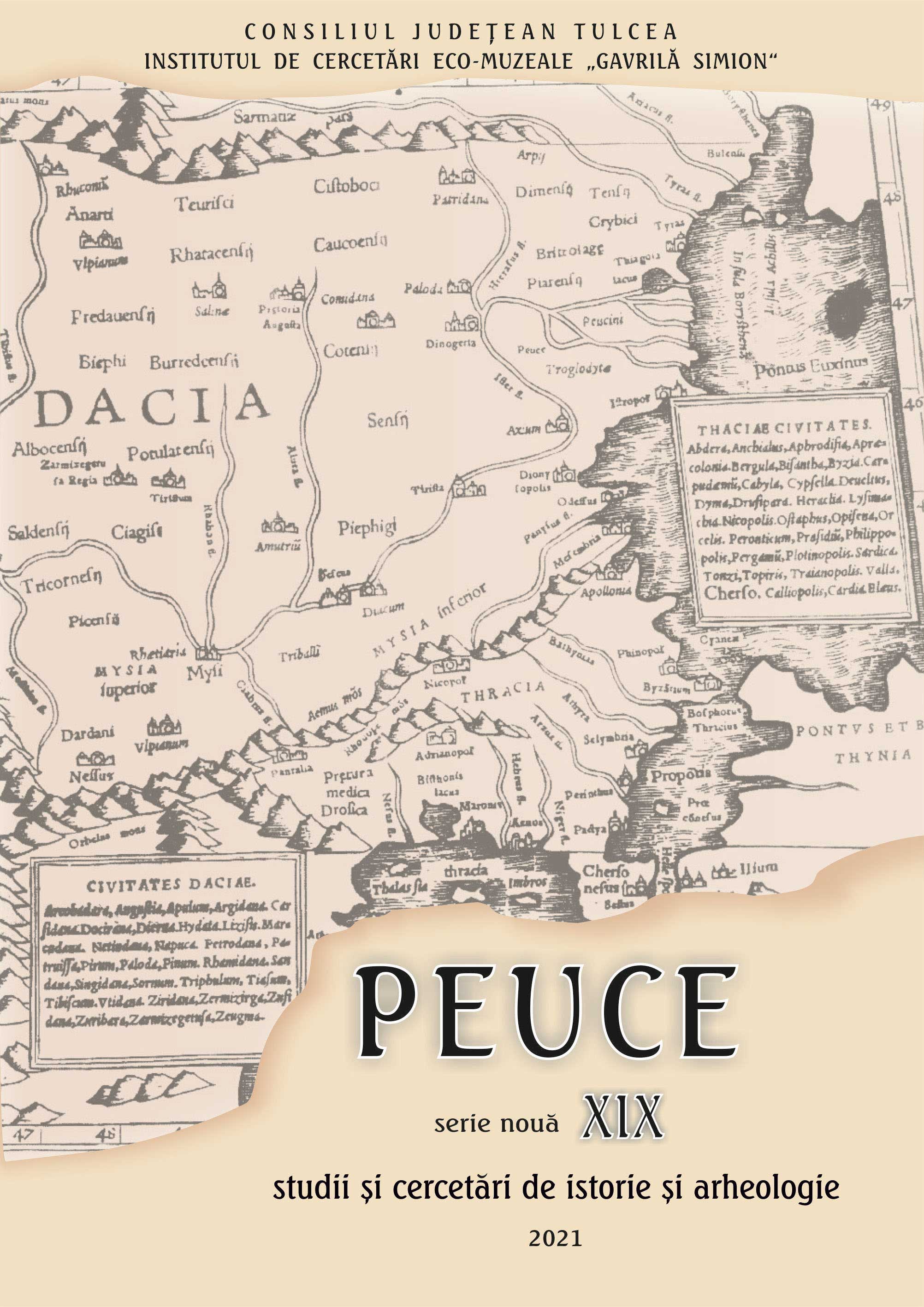The Emergence of Inland Settlement in Northern Dobruja at the End of the Archaic Period. A Newly Surveyed Settlement on Celic Dere Valley
The Emergence of Inland Settlement in Northern Dobruja at the End of the Archaic Period. A Newly Surveyed Settlement on Celic Dere Valley
Author(s): Maria-Magdalena Ștefan, Dan Ștefan, Valeriu Sîrbu, Sorin Cristian Ailincăi, Alexandra ȚârleaSubject(s): History, Archaeology
Published by: Institutul de Cercetari Eco-Muzeale Tulcea - Institutul de Istorie si Arheologie
Keywords: Dobruja;Iron Age; Scythians; Greek pottery; Celic Dere;settlement;
Summary/Abstract: In addition to the decades-long known archaeological ensemble (consisting of a 6th-3rd centuries BC settlement and tumuli necropolis) on Celic Dere valley, in Northern Dobruja, a second settlement (Cassiana) of the same period was recently documented – just 2.5 km to the east – on the same river valley, right near Celic Dere Monastery. The newly surveyed settlement at Celic Dere Monastery/Cassiana was field assessed, in 2013 and 2014, by geophysical survey (magnetic method), aerial photogrammetry and systematic collecting of surface materials. LiDAR data was used as an integrative background of the landscape analysis. The discovery is meaningful because it gives the opportunity to discuss once more, and with enhanced elements, the impact of Greek colonisation in western Pontus upon the aggregation processes of local populations. The proximity of two contemporaneous large settlements characterized by the same rich mix of materials (consisting of Archaic and Classical periods amphorae fragments, Archaic monochrome grey wheel-made ware and hand-made local pottery of late Hallstatt tradition), even if for the Monastery settlement the considered pottery originates only from surface surveys, reveals the consistent demography of the communities inhabiting the high hills bordering the Danube, their endurance in the same places from late Hallstatt till early Hellenistic period, and their organisation in habitation nuclei based on steady markets directly connected with the western Black Sea Greek colonies, of which Orgame and Istros were located at ca. 50-60 km to the south-east. The two settlements on Celic Dere valley, for which a peak of early activity seems to be the end of the 6th century BC and the 5th century BC, mainly exploit the proximity of a major Danube ford (at Isaccea, 20 km north) and the existence of an important inland route going towards the former Black Sea golfs – now the lakes Babadag-Razim-Sinoe. They represent a nucleus within a larger group of emerging settlements, at the end of the Archaic period, throughout Northern Dobruja – either near Danube (like Revărsarea Tichilești or Novoselskoe – on the other shore), far inland, in the high plateaus (Beidaud) or in a 20-8 km range around Istros and Orgame and the former navigable golfs (Tariverde, Nuntași, Vișina, Sinoe, Vadu). If the last category was often interpreted as Greek establishments, results of colonial activity, inhabited by an ethnically mixed population, the sites of the same type, located in the Danube area, point to the reality of a more extensive process of social development and demographic growth happening inland, linked to a specific period – end of the 6th-5th century BC.
Journal: Peuce (Serie Nouă) - Studii şi cercetari de istorie şi arheologie
- Issue Year: XIX/2021
- Issue No: 19
- Page Range: 79-122
- Page Count: 44
- Language: English

